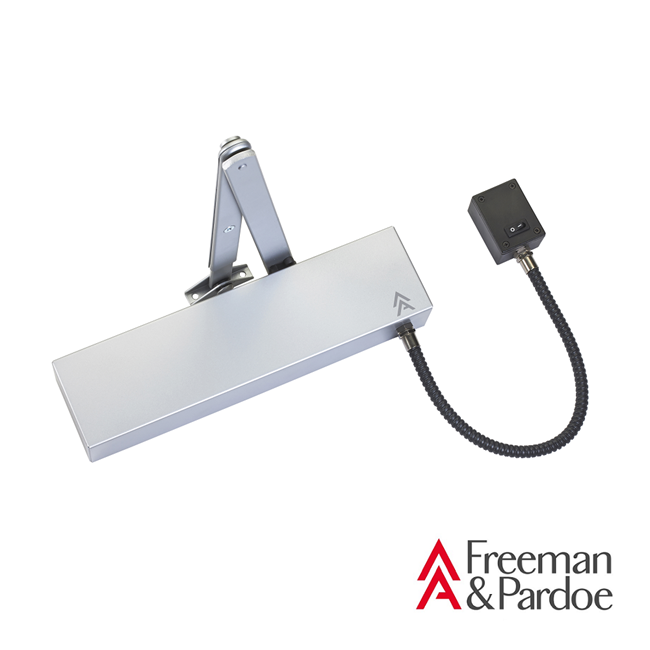Fire Safety and BS 8300 - Why your Fire Doors should comply with both
Why do I need a Door Closer?
For any fire door that is being installed into a building, legislation dictates that a Fire Door Closer must be fitted to allow the door to return to a closed position after each use and remain shut - This prevents the spread of flame and smoke in the event of a fire. However, if a fire door were to remain permanently shut, this would impede access around the building and violate the Equality Act (2010) and BS 8300 Ease of Access standards.
Here at Freeman and Pardoe we offer a range of solutions to cover all Fire Door applications. These include Mechanical and Electromagnetic Door Closers as well as Fire Door Holders.
What are the advantages of Electromagnetic Door Closers?
An Electromagnetic Door Closer can easily and comfortably meet Accessibility regulations such as the Equality Act, Document M or BS 8300 in one of two ways:
1. When installed in "Swing Free" mode virtually all opening resistance is removed and the door is free to operate as if there is no door closer installed, or;
2. When set up in "Hold Open" mode, the door can be held open permanently to allow barrier free access throughout a building.
Electromagnetic door closers are also wired directly into the fire detection system so that in the event of a fire, the door shuts automatically - making them the ideal solution to achieve conformity with both Building / Fire Regulations and BS 8300.
How do Mechanical Door Closer Compare with Electromagnetic Door Closers and Holders?
Mechanical Door Closers are "self-closing" and comply with Fire Regulations by always returning the door to its close position after each use. However, whilst the door closer will always perform its function, people inhabiting a building consider a closed fire door to be a hindrance to access and therefore consistently (and illegally) prop fire doors open for their own convenience - creating an enormous fire risk.
Furthermore, even when fire doors installed with mechanical closers are not "propped open" they can be difficult to open for the young, elderly and disabled, thus contravening BS 8300, Document M of the Building Regulations and risk claims under the Equality Act.
Electromagnetic Door Closers, which utilise Hold Open or Swing Free modes of operation, can solve this common problem by ensuring access for all whilst also complying with Building Regulations and the Law.
Mechanical Closers
standard Mechanical Door Closers are "self-closing" meaning that they return the door to its closed position after each use but can often act as a hindrance with regards to Accessibility since some closers do not meet the prescribed opening forces detailed in BS 8300 or Document M (you can read more about this here).
For this reason we always recommend either specifying an Electromagnetic Door Holder or combining a mechanical door closer with an Electromagnetic Hold Open Device (such as a Wall Magnet) which allows the door to again be retained in its open position to provide unhindered access but will release on activation of the fire alarm allowing the door to close.
To find out more about our Hold Open solutions contact a member of our team here.
